The fall of Gucci was inevitable
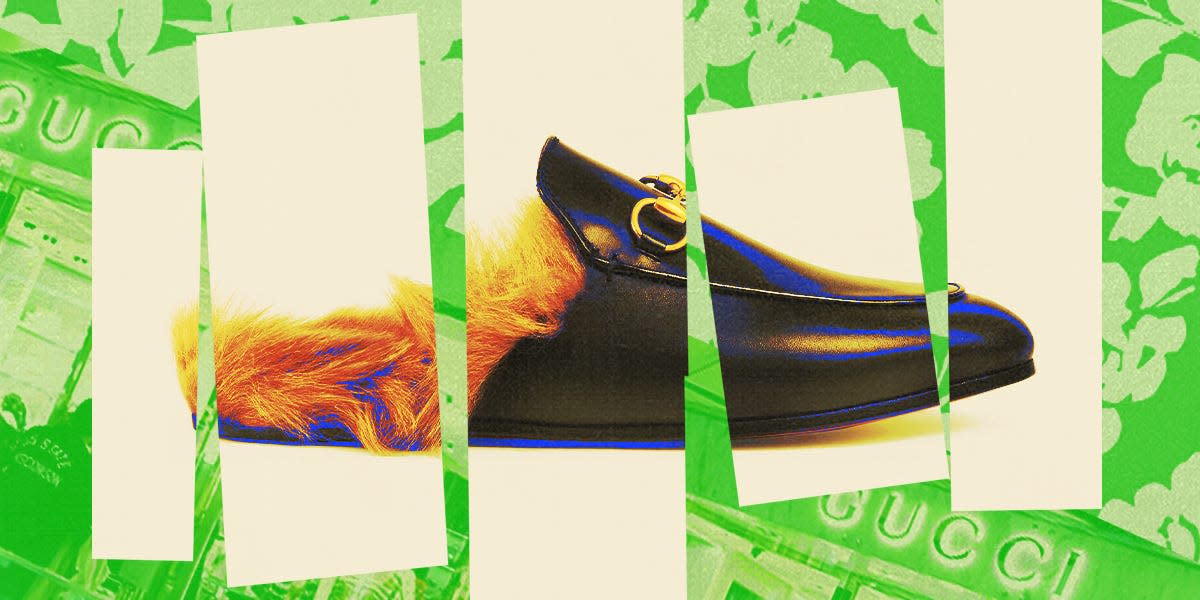
In 2015, as part of creative director Alessandro Michele's first line for the fashion house, Gucci's famous loafers got a makeover. While they still had the classic horse-bit buckle, the backs were shaved down to make them mules, and tufts of kangaroo fur were added to the heel.
They were everything but quiet luxury. Fur! Brand recognition! Impractical!
And customers loved them. Soon, they were on the pedicured feet of Gigi Hadid and Sienna Miller. You could buy dupes from fast-fashion brands like Steve Madden and ASOS for a fraction of the cost. (You can also now buy a reedition made with lambswool for $1,090.)
"It's just such a brilliant bourgeois signature — and these are both arch and fluffy," Vogue Creative Digital Director Sally Singer said at the time.
It marked the beginning of the Michele era, with logos everywhere and over-the-top designs. It also became known as a turning point for the company. Between 2015 and 2022, revenue at Gucci more than doubled, eventually surpassing $10 billion, and margins grew by about 10 percentage points.
"We got used to hearing about double-digit growth at Gucci," Fflur Roberts, the head of luxury goods at Euromonitor, told Business Insider.
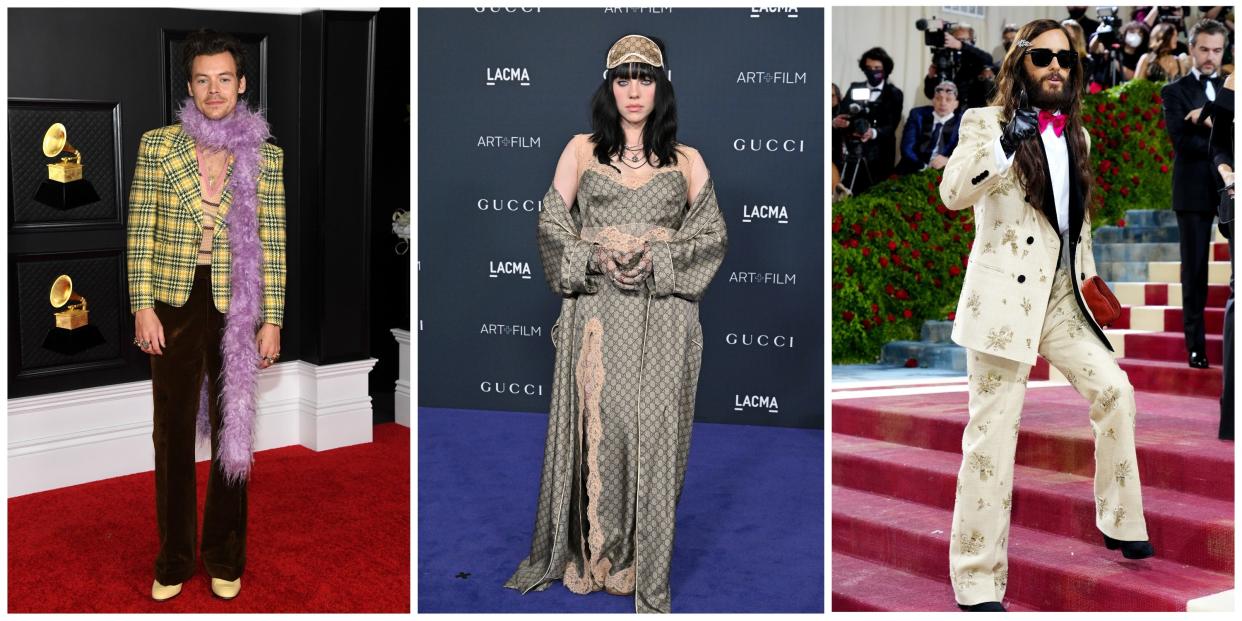
But the brand's fortunes have reversed. Over the past couple of months, Gucci has instead made headlines for its tumbling sales, its prevalence on discount racks, and its lack of design direction under its new creative chief, Sabato De Sarno.
"I think of what a fashion editor is wearing — it's not Gucci," Lindsey Solomon, a fashion publicist, told BI.
Last week, its parent company, Kering, reported that Gucci's sales declined 18% in the first quarter of this year compared to the same period last year and warned that companywide recurring operating income for the first half of 2024 would be down as much as 45%.
The new collection from De Sarno, who was appointed in January 2023 after Gucci abruptly split with Michele, has failed to make waves. After taking the top spot on the Lyst Index of fashion's hottest brands in 2022, Gucci dropped to number 11 last quarter.
To put it as bluntly as Kering CEO François-Henri Pinault did during February's earnings call: "Gucci has not kept pace with its peers."
"It was slow to evolve its brand aesthetic in the wake of the pandemic," he continued. "The necessary balance between fashion and exclusivity, which supports the house ability to attract a broad range of consumers, was a little bit diluted." The company did not respond to a request for comment for BI for this article.
Gucci's pace of growth was unsustainable, even without current macroeconomic headwinds, and the strategy behind the brand — embracing a singular trend across all product verticals, appealing to aspirational customers, and relying heavily on China — was never going to have lasting success, fashion pros say.
"It did too well," Jelena Sokolova, a senior equity analyst at Morningstar, told Business Insider. "It was too good to be true."
From logomania to logo fatigue.
An Alessandro Michele design is easy to pick out of a lineup: They tend to be ornate and flowery, and feature the brand's classic double Gs.
"Logomania," publicist Solomon said. "It was the most influential brand in fashion in terms of maximalism."
When Michele's first collection hit, it flew off the shelves, igniting the brand's massive growth. As BI declared at the time, Gucci was cool again.
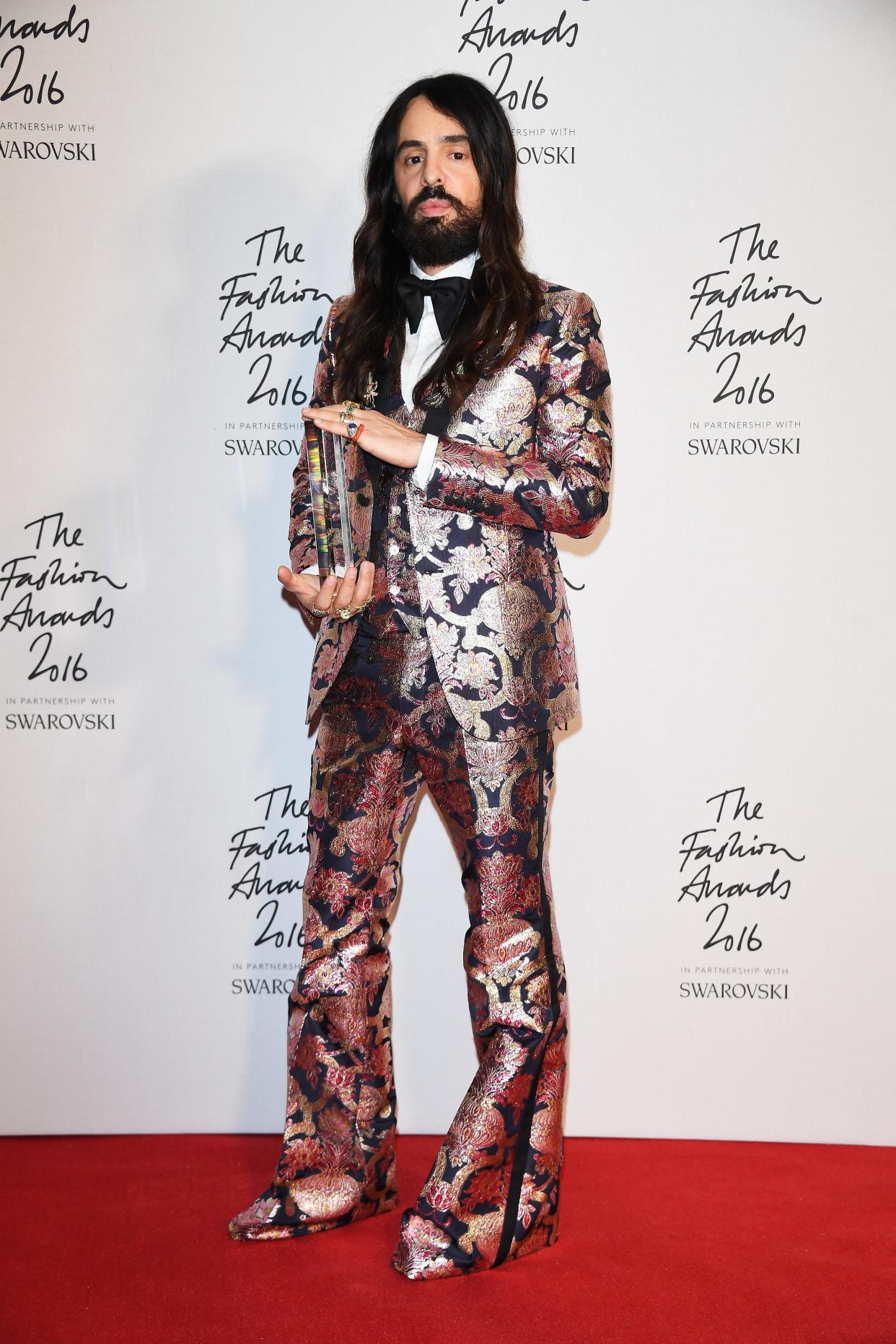
It soon touched every aspect of the nearly century-old fashion house. Unlike at some other fashion houses, Michele was responsible for bags, shoes, clothing, store design, and marketing.
"The creative vision of Michele — that kind of impacted everything," Sokolova said. "It permeated all collections. It was in handbags, it was in clothes, it was in shoes."
But by 2020, the winds of the fashion world moved away from the loud, in-your-face style for which Michele was known. People locked at home during the pandemic did not want to shell out for such obviously trend-driven pieces that could be out of fashion by the time the world opened up.
Luxury buyers turned to designers focused on lasting quality, like Brunello Cuccinelli and Hermès. It's reflected in their stock prices, up about 244% and 200% since the start of 2020. The share price of Kering, which is heavily reflected by Gucci, is down almost 40% over that time.
But Gucci "seemed to be trapped by a sudden market change at the start of the pandemic when consumers embraced a more classic and understated 'quiet luxury' aesthetic," Thomas Chauvet, head of luxury goods equity research at Citi, told BI.
Still, Michele stayed true to his approach.
"The designs plateaued a little bit at a certain point," Solomon said. "You have to represent new ideas pretty regularly. A new collection, new concept, new materials, sustainability — something to push the conversation forward."
The embrace of a singular aesthetic, which was great for creating a unified, strong brand, proved less ideal when it was out of style. It all started to seem a little gimmicky, and without any diversification, there were few products for customers to gravitate toward.
It's something that some predicted.
"We still believe the Gucci brand's current growth rate, which is 10 times higher than that of the industry, represents a risk going forward," Morningstar's Sokolova wrote in a 2017 note. "We prefer to take a prudent stance and acknowledge market saturation risk, given the very distinct aesthetics of the current collections (which can produce both tremendous demand uptick and fatigue)."
The great gamble of Michele's Gucci, which had paid off for years, was starting to turn.
How luxe can a brand be in the metaverse?
But Gucci's fate wasn't all tied up in its designs. Macroeconomic conditions had just as big of an effect on its sales as its aesthetics did.
During its height, the brand not only embraced maximalism in its designs but also in its partnerships: The North Face, Disney, the metaverse.
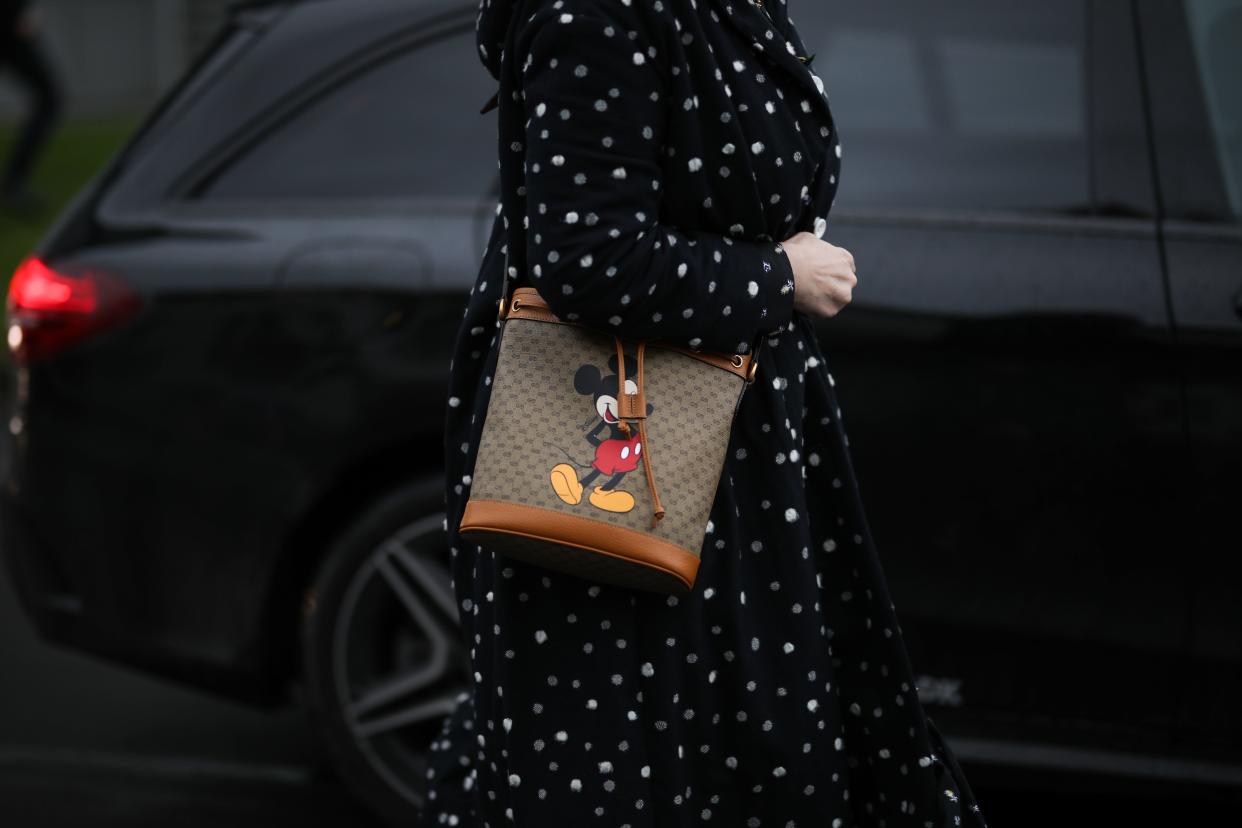
Between these mass-market partnerships and the trend-driven nature of Michele's looks, Gucci gained a wide following, particularly among younger and more aspirational — or less wealthy — customers.
It's a different approach than at Hermès, which embraces high cost and scarcity to fuel growth. And, at the time, it was seen as a plus, as it exposed the brand to a new audience that didn't traditionally buy luxury.
But Gucci developed a "high dependence" on those consumers, Chauvet said, and as economic uncertainty and inflation grew — and they blew through their pandemic savings — those customers became the first to go.
"Apart from the ultra-ultrawealthy, we are all feeling the cost-of-living crisis," Roberts said.
To save money, aspirational customers are turning more to resale sites, where they can get luxury products for less, plus a little wear and tear.
At the time of writing, 200 double-G logo Gucci belts were available on luxury consignment shop The RealReal for as little as $208. Online, the most simple version of the belt — which became a staple of Michele's Gucci — cost $520.
And younger customers who can still afford to splurge may simply not want to spend on such flashy items or have moved on to different brands.
"Those consumers that were buying Gucci at its height, they are getting older," Roberts said. "They may not want to be walking around with big logos."
A Chinese boom turned bust.
If Gucci was a chart-topper with aspirational consumers in traditional luxury markets, it went multiplatinum in China. The Asia-Pacific region, fueled by China, grew from representing 35% of the label's sales in 2015 to 44% in 2021. Revenue in the region tripled in that period, outpacing total growth.
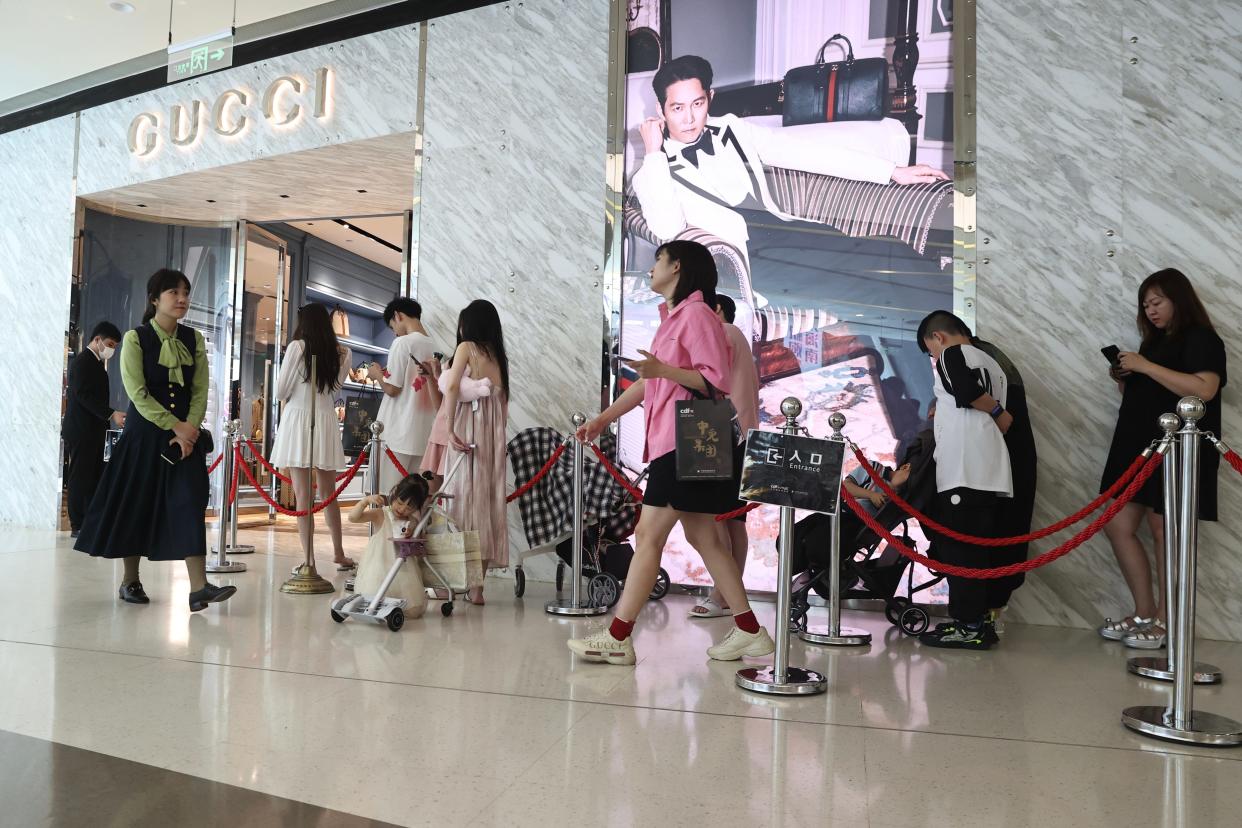
It was great while Chinese shoppers were spending money, but as they reined that in, Gucci slumped. Just as Gucci relied too heavily on one designer and on aspirational consumers, it relied too heavily on China.
After the pandemic, luxury sales never rebounded as expected, and the country's economic growth slowed and consumers remained cautious. China's luxury market tripled between 2017 and 2021, but despite growth last year, it has slowed since 2021, according to research from Bain.
With foreign travel still down among Chinese people, they are not spending abroad, either.
"On both sides of the scale, brands are missing out," Roberts said of the Chinese consumer.
Plus, the label's target demo within the country was still aspirational — meaning a double blow. Like in other markets, the ultrawealthy in China who still are spending are favoring brands like Hermès and Chanel.
Last month, the company announced Gucci's first-quarter sales in the Asia Pacific region, which is fueled by China, fell 28% compared to the same period the year prior. In 2023, the brand's sales in the region grew just 5% — a far cry from the double-digit expansion it had been experiencing in its heyday.
"The context right now is not supportive because it is more polarized," Armelle Poulou, Kering's chief financial officer, said about China during an earnings call last month. "Gucci at the moment is not in the sweet spot in terms of positioning."
It's not all over for the House of Gucci.
While it looks like Gucci and its new creative director, De Sarno, have their work cut out, that doesn't mean it's the end of the label. In fact, it probably wouldn't have been such a big deal if Gucci hadn't had such a legacy of success.
"It will never leave the conversation," Solomon said. But, "they will have to come back with a really strong collection."
Some business changes likely should happen. Brands that have resisted cyclicality tend to appeal to the ultrarich and affluent, who are less affected by economic downturns. Analysts suggest the brand should continue to close outlets and offer fewer discounted goods to achieve the scarcity that makes uber-luxury brands so appealing.
The label could also stand not to repeat history — and diversify.
"They're a much bigger brand, and they cannot just rely on one creative vision," Sokolova said.
Part of that could mean embracing certain signatures that eschew trends, like Hermès' Birkin bag, for example, or Louis Vuitton's Neverfull. These looks hold their value — making them good investment pieces no matter the designer.
To be sure, De Sarno wasn't given much of a shot to do all this before the negative press started to hit the stands.
"In the luxury industry, enthusiasm for dramatic headline news can often be overdone,' Chauvet said.
As Pinault is quick to hammer home, it takes time to build a following, and Kering is ramping up its marketing for the label after recently hiring a Louis Vuitton veteran as deputy CEO. So far, there simply have not been enough De Sarno styles physically available to assess how the public is receiving them.
Trends also shift more quickly than ever in the age of social media, and De Sarno may create a design that breaks the internet in a collection or two.
"It's always difficult when there is a transition period," Euromonitor's Roberts said. "That's not to say that De Sarno won't have the same effect — only time will tell."
Read the original article on Business Insider
